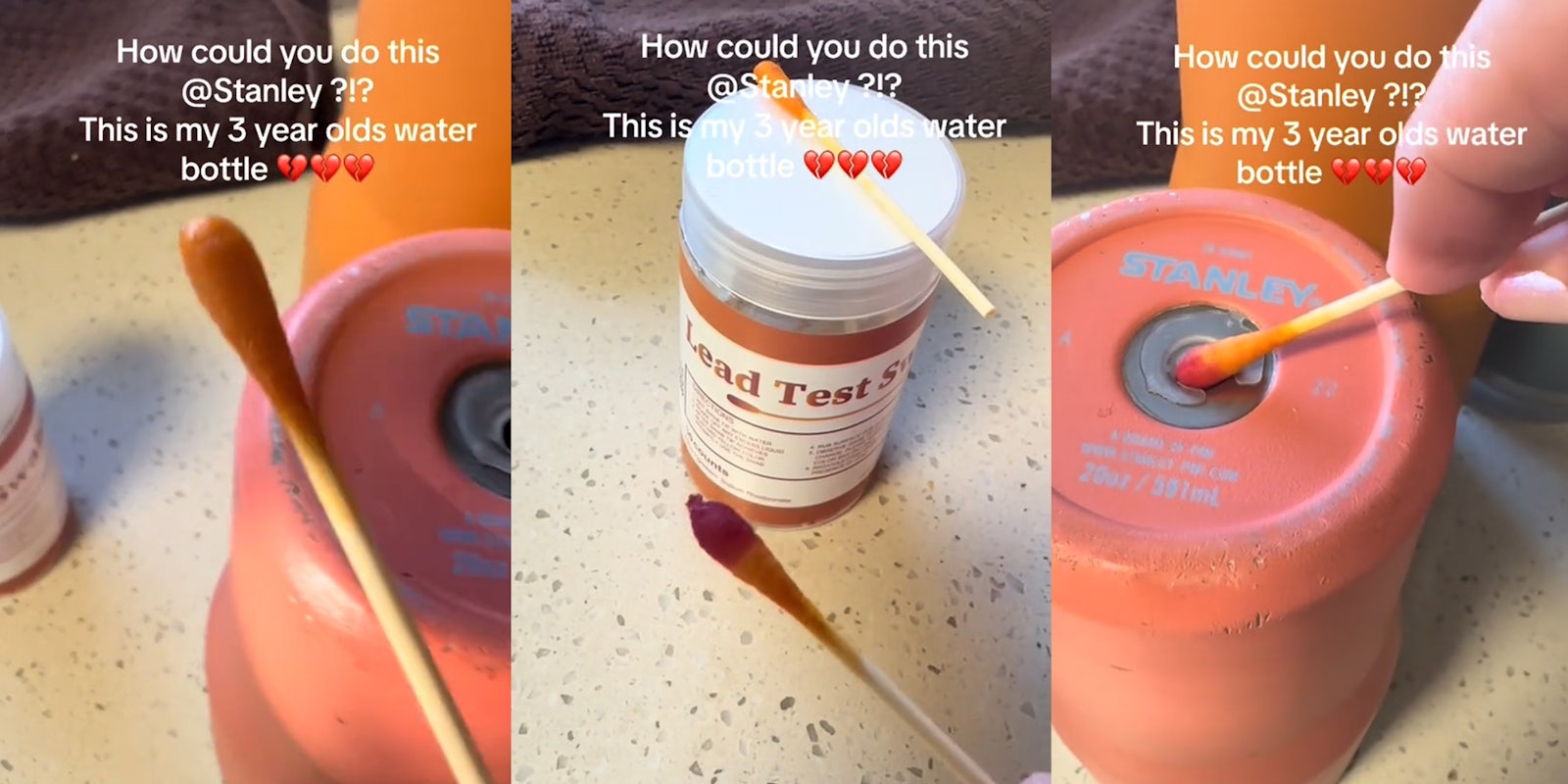Stanley is a brand that has found unexpected viral success. While the brand was founded in 1913 and produced a variety of temperature-holding drinkware pieces, many of its products were marketed toward campers and outdoor adventurers. Now, one of their products has gained momentum with a whole new demographic—TikTokers.
Users on the site have flocked to the brand’s 40 oz insulated tumbler, which comes in a variety of pastels. This brand found so much success among young people, in fact, that they launched a successful collaboration with Starbucks.
Although many happy customers can be found throughout TikTok, one customer isn’t very happy. That customer is TikTok user Mils (@m1l522), who recently purchased a Stanley Cup for her 3-year-old.
The video, which currently has over 2.2 million views as of Saturday morning, shows Mils using a lead test kit on the bottom center of the cup. The cup appears to test positive for lead.
@m1l522 I was thinking I was chosing a healtier option for my sons water bottle and I’m realizing I have exposed him to lead every day. How is this legal? He is three years old. THREE! Stop using Stanley and get your bottles tested. #leadpoisoningtiktok #leadsafemama #stanley #stanleycup #stanleytumbler #leadlawsu #cupkinkids #cupkin #viral #momsoftiktok #waterbottle #stainlesssteelwaterbottle #toddlerwaterbottle ♬ What Was I Made For? [From The Motion Picture “Barbie”] – Billie Eilish
“I was thinking I was choosing a healthier option for my sons water bottle and I’m realizing I have exposed him to lead every day. How is this legal? He is three years old. THREE!” she writes in the caption. “Stop using Stanley and get your bottles tested.”
There are a few issues with Mils’ claim.
First, it appears that most, if not all, Stanley cups produced today have a piece covering the area Mils is testing. If this area is covered, the actual exposure of an everyday user to this problem area would be minimal or non-existent. For their part, Stanley says on its website that “Our products are FDA tested and approved, and all contact surfaces are guaranteed to be safe and BPS/BPA-free.”
That said, it does appear that this specific portion of the bottle was sealed with lead solder, as similar tests have come to the same conclusion. If this portion of the bottle is exposed, the concern is understandable—however, it appears unlikely that one would be exposed to this part of the bottle in typical use provided that the sticker remains on the bottom of the bottle.
“If I understand correctly all vacuum sealed water bottles are sealed with a lead solder,” explained a commenter under Mils’ video. “Once the paint comes off or the cover you need to toss.”
“This is the soldering point, no? Not the inside or where anyone is in contact with their liquid,” noted another.
That said, many said that Stanley should find a way to do away with lead entirely, saying that some brands like HydroFlask have found ways to remove lead.
“Glass bottles with sleeves are the best options,” said a user.
No matter how much lead is present, Mils says she’s gotten rid of the item.
“I just don’t want lead on my child’s stuff,” she wrote in a comment. “It’s trash now.”
The Daily Dot reached out to Stanley via email and Mils via TikTok comment.



